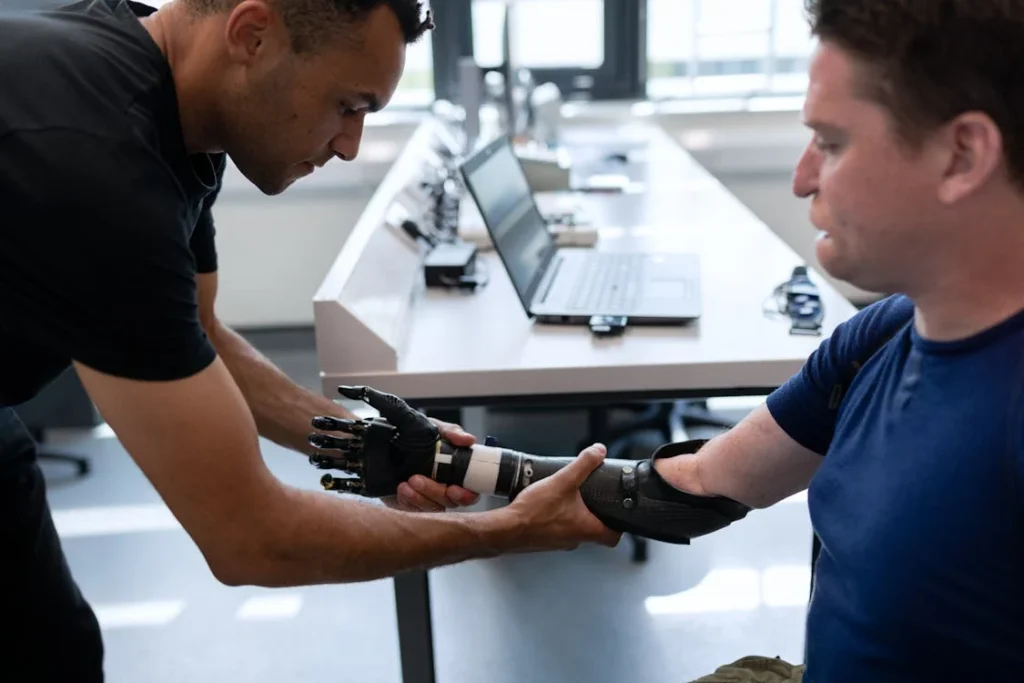Walking, running, or even standing still requires a surprising amount of energy. For someone using a prosthetic, it can take even more effort because the body has to work harder to move in a way that feels natural. Every small misalignment, every extra swing or drag, adds up, making daily life more tiring than it needs to be.
That is where biomechanically tuned prosthetics come in. By adjusting the prosthetic to match the user’s natural body movements, energy use can be reduced. Movements become smoother, easier, and more efficient.
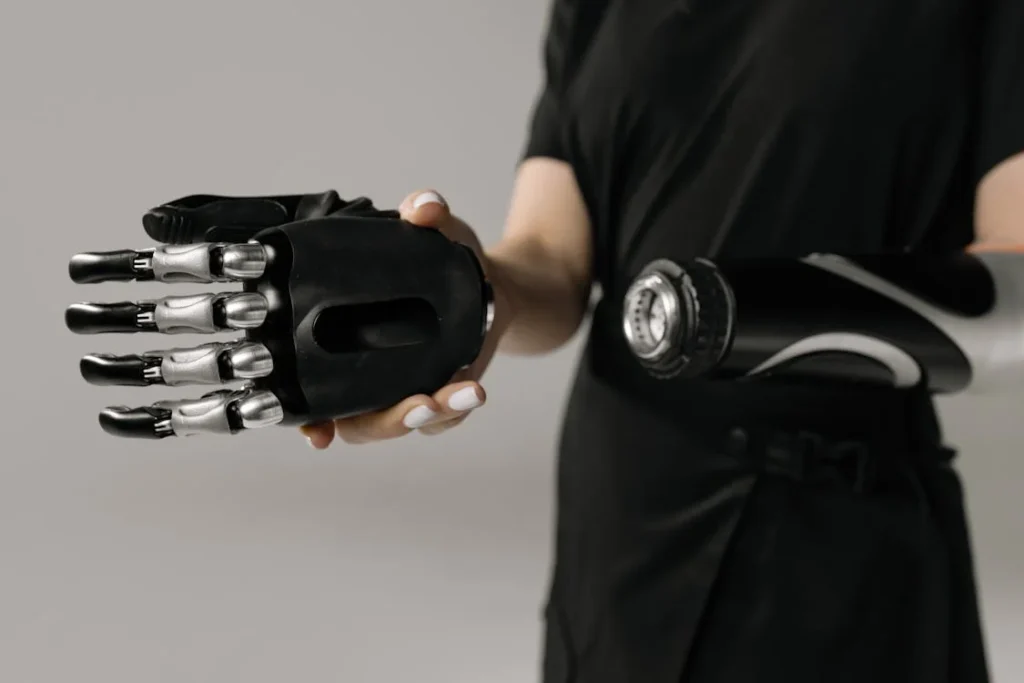
What Is Biomechanical Tuning in Prosthetics?
Understanding the Basics
Biomechanical tuning is the careful adjustment of a prosthetic to match how a person’s body naturally moves. It is not just about fitting the prosthetic to the stump or making sure it stays attached. It is about looking at how the hips, knees, ankles, and even the spine move when someone walks, stands, or runs.
When someone uses a prosthetic that is not tuned correctly, the body has to make small, extra movements to compensate. These small changes might not seem important at first.
But over time, they can lead to tiredness, joint pain, and even long-term injury. The person may feel like they are always fighting their own prosthetic instead of moving freely with it.
At Robobionics, biomechanical tuning is not a one-time adjustment. It is a careful process where we watch how a user moves, listen to how they feel, and make small changes until the prosthetic works with their body instead of against it.
Why Tuning Matters for Energy Efficiency
The body uses energy in everything it does. A well-tuned prosthetic helps the body use that energy wisely. When the prosthetic matches the body’s natural rhythm, each step becomes easier.
There is less wasted movement, less strain on the muscles, and less fatigue at the end of the day.
Imagine riding a bicycle with tires that are slightly flat. You can still move forward, but you have to work harder than if the tires were fully inflated.
The same is true for an untuned prosthetic. It forces the body to use more energy just to do normal activities.
Proper tuning allows the body to move more efficiently. Walking feels lighter. Standing feels steadier. Running feels more powerful. Most importantly, the user feels less exhausted and more willing to stay active.
At Robobionics, we see energy efficiency not just as a technical goal, but as a way to give people their daily lives back.
When users feel less tired, they are free to do more — whether it is working, playing, exercising, or simply enjoying time with family and friends.
How Tuning Helps with Balance and Comfort
Good biomechanical tuning also improves balance. When a prosthetic moves naturally with the body, it is easier to keep the body upright and steady.
This reduces the risk of falls and accidents, which can be a major concern for prosthetic users, especially as they get older.
Comfort is another major benefit. When the prosthetic fits the movement, there is less rubbing, less slipping, and fewer pressure points.
Users often tell us that after proper tuning, their prosthetic feels like it “disappears” — it becomes so natural that they stop noticing it with every step.
At Robobionics, we treat comfort and energy efficiency as two sides of the same coin. A comfortable prosthetic that moves efficiently is one that a user will want to wear all day, every day. And that makes a real difference in both health and happiness.
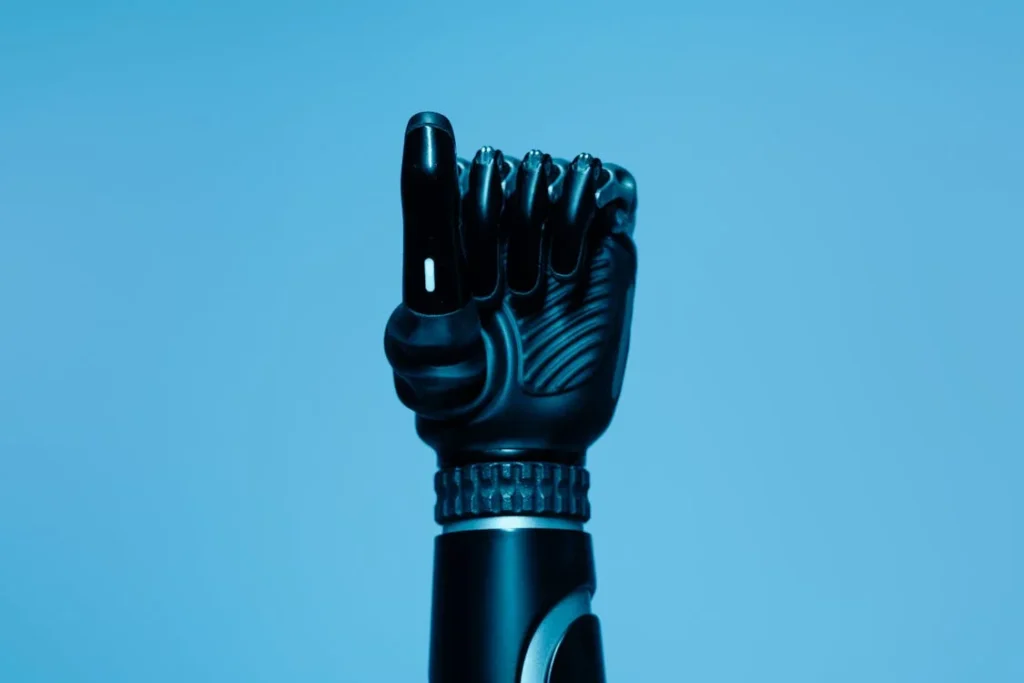
How Prosthetists Perform Biomechanical Tuning
Careful Observation and Assessment
The first step in biomechanical tuning is not about adjusting bolts or tightening straps. It begins with careful observation.
Prosthetists spend time watching how the user walks, stands, sits, and moves in different environments. They look for small signs that something is not right — a slight limp, uneven hip movement, a tilt of the shoulders, or a quick shift of weight from side to side.
These signs reveal how the body is reacting to the prosthetic. Sometimes, a user will not even notice the small adjustments they are making. But an experienced eye can spot them quickly.
At Robobionics, we use a mix of simple observation and advanced motion analysis tools to get a complete picture. We believe that both the human eye and modern technology are important when tuning a prosthetic to the body’s natural flow.
Listening to the User’s Experience
While watching the user move is important, listening to them is just as critical. Every person feels their prosthetic differently.
Some might feel pressure in the lower back after walking a short distance. Others might feel like they are dragging their foot. Some might not feel pain but notice that they get tired very quickly.
These experiences tell us where the prosthetic may not be supporting the body properly. Sometimes the problem is not where the user feels it but somewhere else entirely. For example, a sore hip might be caused by a foot angle that is slightly wrong.
At Robobionics, we take time to ask the right questions and listen carefully. Our users are the true experts in how their prosthetic feels day after day.
Making Small, Precise Adjustments
Once the issues are understood, the prosthetist begins making small adjustments. These might include changing the alignment of the socket, adjusting the angle of the knee joint, repositioning the foot, or fine-tuning the tension in springs and dampers.
Each adjustment is tested in real time. The user walks, the movement is observed, feedback is gathered, and adjustments are refined. This process continues until the prosthetic and the body move together in harmony.
At Robobionics, we believe in patience during tuning. Rushing leads to mistakes. Taking time to find the perfect alignment leads to a prosthetic that not only moves better but also feels better for the user every single day.
Training the Body to Move Naturally Again
After tuning, the journey is not over. The body needs time to get used to the new, more efficient movement.
Muscles that were overcompensating might relax. Joints that were working too hard might start moving more naturally.
That’s why we offer guided training and rehabilitation as part of the tuning process. Walking with a tuned prosthetic feels different, and users often need a little coaching to trust their new movement patterns.
Over time, this training helps users rebuild strength, confidence, and endurance.
At Robobionics, we see biomechanical tuning as a full-circle process — observe, listen, adjust, train, and support. Only through this full journey can we unlock the full potential of both the prosthetic and the person using it.
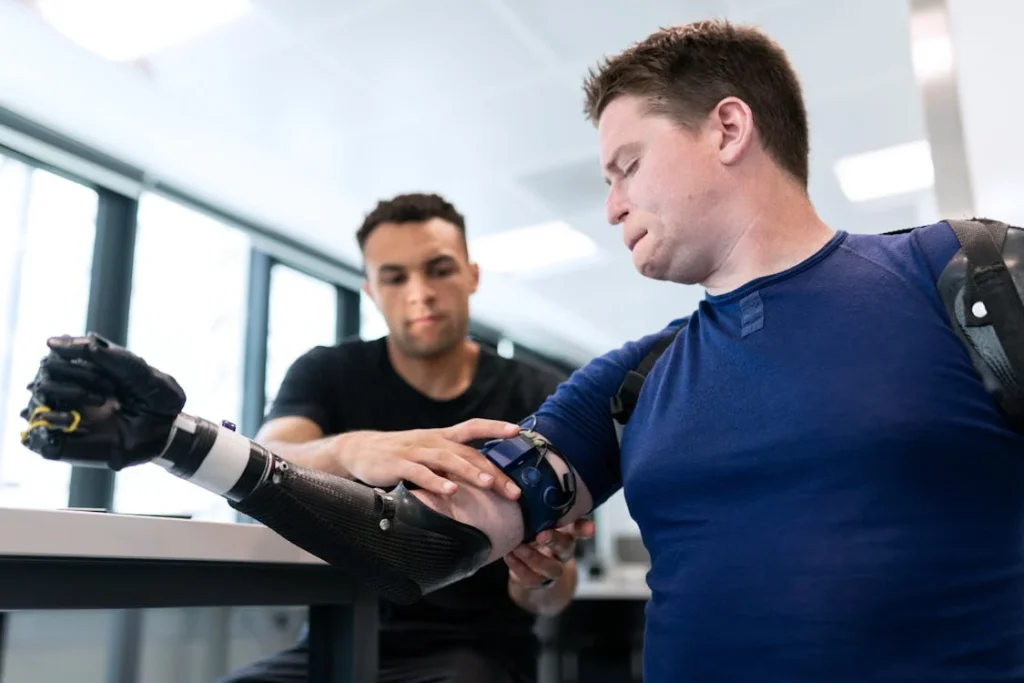
How Biomechanically Tuned Prosthetics Save Energy in Daily Life
Making Walking More Natural and Less Tiring
Walking is one of the most basic movements we do every day. Yet for someone with a prosthetic, it can feel like climbing a hill even on flat ground if the prosthetic is not tuned properly.
Every extra sway, every slight uneven step adds to the amount of effort needed.
A biomechanically tuned prosthetic reduces unnecessary movements. It lines up the hips, knees, and ankles so that the body can move in a straight, smooth line.
The foot strikes the ground at the right angle, and the knee bends and straightens at the right moments. These small improvements add up step after step, reducing the energy used with each stride.
At Robobionics, we have seen how even small adjustments in prosthetic alignment can lead to huge changes in how much energy users need to walk through their day.
A smoother walk means a longer, more active life with less fatigue and discomfort.
Standing Still Without Strain
Many people do not realize how much energy it takes to simply stand still. Balancing upright requires small but constant muscle activity.
When a prosthetic is not tuned well, the body leans or compensates, causing muscles to work overtime just to keep balance.
With a properly tuned prosthetic, standing becomes much more effortless. The body can find a natural center of gravity without needing to tense or shift constantly.
This reduces strain on the lower back, hips, and even the non-amputated leg, which often ends up carrying more weight when balance is poor.
At Robobionics, one of our tuning goals is always to improve standing balance. Users often tell us that after proper adjustment, they feel steadier, more relaxed, and able to stand comfortably for much longer periods without pain or fatigue.
Helping with Running and Quick Movements
Running, jumping, or even quick stepping onto a curb requires a burst of energy and perfect timing between different parts of the body. If a prosthetic is out of tune, that timing is off. The result is more effort spent controlling movement and less energy driving forward.
Biomechanically tuned prosthetics help the user recover that natural spring in their step. The knee bends and extends at the right moments. The foot rolls off the ground smoothly. The muscles work together efficiently, not against each other.
At Robobionics, we work closely with users who want to stay active, whether they are casual runners or sports enthusiasts.
By tuning the prosthetic to match the natural rhythm of running, we help users enjoy sports, fitness, and outdoor activities with much less tiredness and greater joy.
Reducing Wear and Tear on the Body
Using extra energy to move every day does not just lead to tiredness. Over time, it can cause serious wear and tear on the body.
Extra pressure on joints can lead to early arthritis. Overworked muscles can cause chronic pain. An uneven gait can even affect the spine.
Biomechanically tuned prosthetics protect the body from these hidden dangers. By allowing the body to move in its natural pattern, tuned prosthetics spread forces evenly, reduce pressure on joints, and let muscles work the way they are supposed to.
At Robobionics, we believe that every adjustment we make today saves our users from health problems tomorrow.
A well-tuned prosthetic is not just about feeling better today — it is about protecting the body for years to come.

Real-World Stories: How Biomechanical Tuning Transformed Lives
Walking Without Fear of Fatigue
One of our users, a college student from Lucknow, struggled with constant tiredness. Even a short walk across campus left him feeling drained.
His first prosthetic was fitted quickly without much tuning. Every step felt like a battle between his body and the device.
When he came to Robobionics, we spent time observing his movement and listening to his concerns. We found small misalignments that forced his hips and lower back to work harder than necessary.
After careful tuning — adjusting foot angles, knee alignment, and socket fit — the change was immediate. His walking became smoother, and the heavy feeling in his back disappeared.
He told us that for the first time, he could move across campus, attend classes, and still have energy left at the end of the day. For him, tuning did not just save energy; it gave him his full day back.
Returning to Active Life
Another user, a shop owner from Jaipur, had been active all his life. After losing his leg, he feared he would never be able to manage the daily hustle of running his small business.
His first prosthetic worked well enough for standing but left him exhausted by lunchtime.
After a biomechanical review at Robobionics, we realized his gait cycle was uneven. His foot placement was too far ahead, causing unnecessary strain with every step.
We tuned his prosthetic carefully, rebalancing his stance and stride. With these adjustments, his energy levels improved dramatically.
He could now move through his shop, manage deliveries, and interact with customers without feeling like he had run a marathon. His workday stretched longer, and his confidence grew stronger.
Moving Freely Again
We also remember a young woman from Kochi who loved dance and movement. After her amputation, she missed the feeling of moving with grace.
When she came to Robobionics, her main goal was not just walking — it was dancing again.
Through careful biomechanical tuning, we crafted a prosthetic that supported her balance, timing, and rhythm. Step by step, she rebuilt her skills.
She may not perform professional routines, but today she dances at home, at weddings, and at community events. Her movements are filled with joy, not struggle. She often shares videos with us, showing the beauty and freedom that come from a well-tuned prosthetic.
At Robobionics, these stories are at the heart of what we do. Each one shows that biomechanical tuning is not just about saving a few calories of energy. It’s about saving dreams, restoring passions, and helping people live fully again.
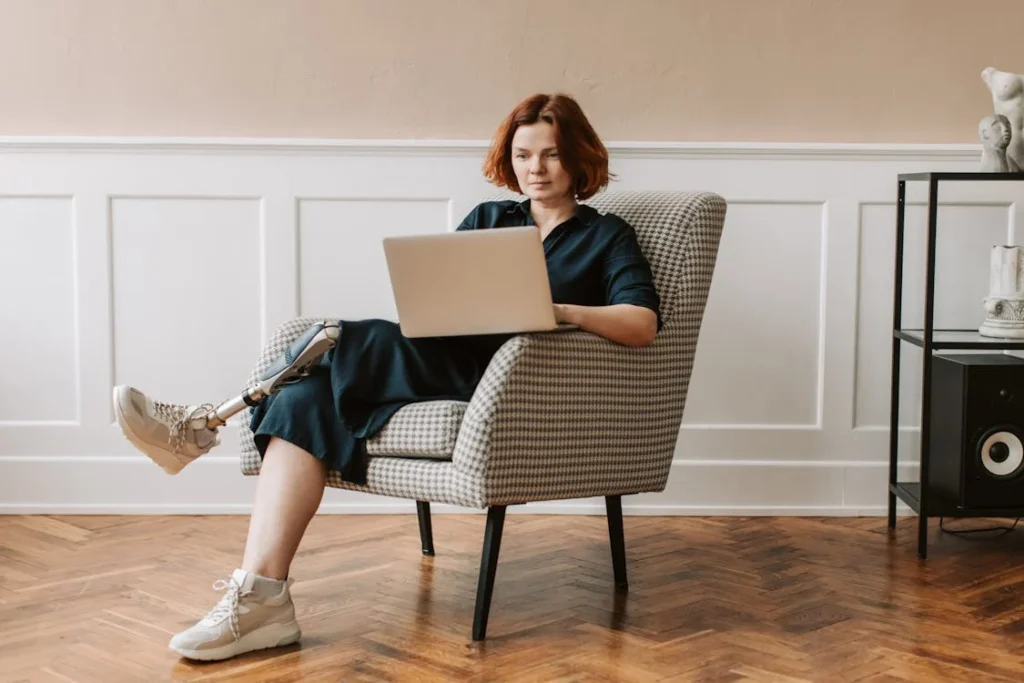
The Psychological Impact of Biomechanical Tuning on Users
How Better Movement Builds Mental Strength
When we talk about prosthetics, most people first think about the physical side — walking better, running faster, standing longer. But what often matters just as much is how the prosthetic affects a person’s mind and emotions.
Using a prosthetic that feels wrong can quietly wear someone down. Every awkward step, every stumble, every tired moment becomes a reminder that movement is harder now. It chips away at confidence over time.
Some users may even avoid activities they once loved, not because they physically cannot do them, but because the effort feels too overwhelming.
Biomechanical tuning changes that experience completely. When the prosthetic matches the natural way the body wants to move, each step becomes easier.
The user no longer needs to think about every move or constantly worry about tripping or tiring out too soon. Movement becomes automatic again — not perfect, but much closer to what it once was.
At Robobionics, we often see that as users’ movements improve, their mindset shifts too. They walk taller. They smile more.
They start thinking less about what they can’t do and more about what they want to try next. It’s not just a physical transformation. It’s a deep emotional one too.
Rebuilding Trust in the Body
After limb loss, many users struggle to trust their bodies again. Simple tasks like walking down stairs or standing on a bus feel dangerous.
Even with a prosthetic, users often move carefully and slowly, always holding back just in case something goes wrong.
Biomechanical tuning helps rebuild that broken trust. When the prosthetic supports the body properly, the user can lean into movement with less fear.
They find their balance without having to think about it. They move faster, react quicker, and recover from missteps without panic.
Every successful movement, no matter how small, becomes a building block for trust. And trust leads to independence.
At Robobionics, we believe that true independence is not just about physical ability. It’s about trusting yourself to move freely and safely through the world again.
Reducing Cognitive Load and Emotional Fatigue
Moving with an untuned prosthetic is mentally exhausting. Users have to think about every step, every adjustment, every shift in terrain.
That mental work adds up during the day, causing emotional fatigue even when the body isn’t sore.
A properly tuned prosthetic reduces that cognitive load. Movements feel automatic again, freeing up mental space for other things — for conversations, for enjoying surroundings, for focusing on work or play instead of worrying about walking.
This relief from constant thinking is powerful. Many users tell us that after tuning, they feel “lighter” not just in their legs, but in their minds. They describe days that feel easier, calmer, and more fulfilling.
At Robobionics, we recognize that saving physical energy is important — but saving mental and emotional energy is just as vital.
Our tuning process is designed to support both the body and the mind, helping users live richer, fuller lives.
Encouraging Reconnection with Passions and Dreams
When moving becomes easier and thinking about movement fades into the background, something beautiful happens: users start to reconnect with their passions.
Some rediscover old hobbies like cycling, dancing, or hiking. Others simply find joy in everyday moments — chasing after their children, playing with pets, exploring new places without fear.
The prosthetic stops being a barrier and becomes a bridge back to the activities that give life meaning.
Biomechanical tuning plays a key role in this journey. By aligning the prosthetic with the user’s natural movement, we open the door to these possibilities again.
At Robobionics, seeing a user smile after a morning jog or a dance at a family wedding reminds us that our work is not just about mechanics. It’s about helping people dream again — and live those dreams fully.
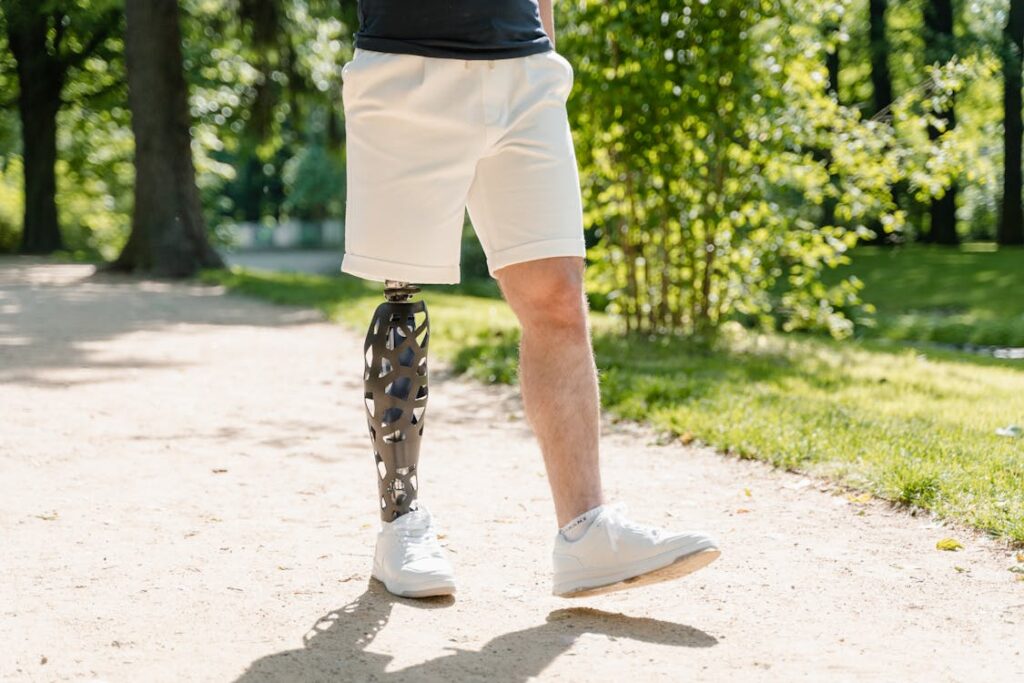
The Future of Biomechanical Tuning in Prosthetics
Smarter Technology for Smarter Movement
The future of prosthetic tuning is full of exciting possibilities. Already, new technologies are helping prosthetists measure body movements more accurately than ever before. Motion capture systems, wearable sensors, and 3D gait analysis tools allow us to see tiny details that the human eye might miss.
Soon, tuning will not only depend on observation and feedback. Real-time data will guide adjustments with pinpoint precision.
Prosthetics could even come with built-in sensors that automatically fine-tune themselves throughout the day, depending on the user’s activity and environment.
At Robobionics, we are closely watching these developments. We are working to bring smarter solutions to our users — not just smarter prosthetics, but smarter ways of fitting and tuning them to each person’s needs.
Personalized Prosthetics Designed for Each Body
In the near future, prosthetics will be made with even more personalization. Instead of choosing from a few standard models, users might get devices designed specifically for their body, their gait, and their lifestyle.
Using tools like 3D printing, prosthetists will be able to create sockets, feet, and knees that are unique to each user.
This kind of personalization will make biomechanical tuning faster and more effective. Instead of adjusting a standard prosthetic to fit the user, we will build prosthetics that are already closer to perfect from the start.
At Robobionics, we are committed to making personalization not a luxury but a standard part of prosthetic care. Because every body is unique, every prosthetic should be too.
Combining Biomechanics with Artificial Intelligence
Another exciting direction is the use of artificial intelligence (AI) to improve tuning. AI could learn how a user moves over days, weeks, or months, and suggest small adjustments to keep the prosthetic working at its best.
It could notice when the user is getting stronger or when movement patterns change due to age, weight, or new activities.
This would mean that tuning would no longer be something done once or twice a year. It would become an ongoing process that happens quietly in the background, keeping the prosthetic aligned with the user’s life at all times.
At Robobionics, we believe that combining human care with smart technology is the future. We are exploring ways to bring AI and biomechanics together to create prosthetics that evolve naturally with the people who use them.
Making Advanced Tuning Accessible to Everyone
Perhaps the most important future goal is making these advances available to everyone, not just a few. High-tech solutions must be affordable, easy to maintain, and available close to home.
Biomechanical tuning should not be something special — it should be part of every prosthetic journey from the start.
At Robobionics, we are working hard to make this vision a reality. By building strong partnerships with local clinics, using local manufacturing, and training more prosthetists across India, we are bringing high-quality biomechanical care to more people every day.
The future of prosthetics is not just about walking better. It’s about living better. And at Robobionics, we are proud to be part of building that future, step by step.
Conclusion
Biomechanically tuned prosthetics are not just about making walking easier. They are about giving people back their energy, confidence, and freedom. By carefully matching the prosthetic to the natural way the body moves, we reduce fatigue, prevent injuries, and make every step feel more natural and effortless.
At Robobionics, we believe every person deserves a prosthetic that works with them, not against them. Through careful tuning, deep listening, and constant innovation, we help our users move through life with greater ease and joy.
The future holds even greater promise, with smarter tools, better materials, and more personal care. But even as technology advances, one thing will always stay the same: our commitment to helping every user move with strength, comfort, and pride.
Because when the prosthetic fits the person — perfectly — the possibilities are endless.



